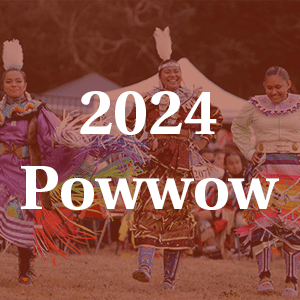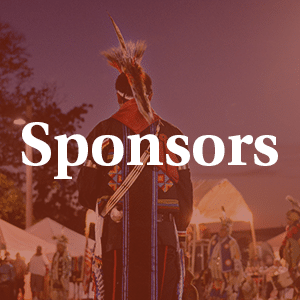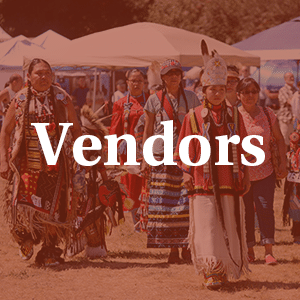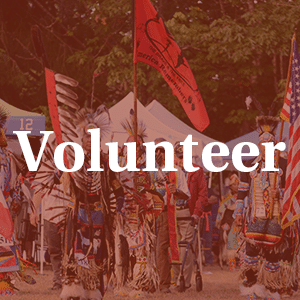All of your Powwow questions answered
A Powwow is a gathering where Native American dancing, singing and celebration take place. It is a special time for people to gather and celebrate, meet old friends and create new friendships.
In early times, hunters would invite their friends and relatives to share their good fortune. As time went on, while the meal was being prepared, relatives would dance to honor their host. Eventually, the dancing became the main focus of the event. Participants began to use this time to display their weaving, quill work and other finery. Powwows also had religious significance. They were an opportunity for families to hold naming and honoring ceremonies.
Powwows have changed over the years; however, they are still gatherings where Indian people can share part of their tribal traditions and culture. But they should not be confused with other tribal customs and ceremonies that are not performed or shared in public gatherings. Most religious ceremonies are no longer part of the pow wows. For instance, naming ceremonies are now more often conducted in the privacy of a family; however, some small powwows do include naming ceremonies. Honoring ceremonies and ceremonies for a dropped eagle feather remain today.
Today, powwows, or celebrations, are still very much part of the lives of many Native Americans. In the Northern Area, the powwow season can begin as early as March; from June through September several powwows take place—somewhere—every weekend. Many families pack up and go on the circuit, camping out and enjoying the celebration activities, singing, dancing and seeing friends they may not have seen since the previous season. A powwow may have dancing and singing contests, “give aways,” encampments, feasting and other cultural activities. In present times, activities such as handgames (stick games), horse races, softball tournaments, parades, pow wow princess contests and other events have been added.
July 19-21, 2024
Friday: 4 p.m. – 10 p.m.
Saturday: 10 a.m. – 10 p.m.
Sunday: 10 a.m. – 6 p.m.
Seattle, WA 98199
This is an outdoor Powwow come rain or shine! So whether bringing an umbrella or sunscreen, please plan accordingly!
Yes! During the Flag Song, or Indian National Anthem, the American Flag is raised or lowered. Please stand and remove hats during this event. Show respect to the Flag, Honor, and Veterans songs by standing until the song is completed. Pictures should NOT be taken during Veterans Songs, Flag Songs, Prayers, or any other time announced by the Master of Ceremonies.
If you wish to photograph a dancer in regalia, ask first. If the picture is for publication or commercial use, that should be explained before the picture is taken. Remember common courtesy and ask permission. Group photographs are usually alright to take, but you might want to ask first. People are sensitive about pictures, so it is always good to be on the safe side and ask.
If you see a lost feather, or you yourself drop a feather, do NOT pick it up. Notify the nearest Staff Member, Veteran, Head Man Dancer or Arena Director immediately.
NO alcohol, firearms or drugs are allowed at Powwows.
It is permissible to take pictures during much of the powwow. If you are not sure always ask, since taking pictures of some activities is not allowed. Please ask dancers if it is OK to take his/her picture before hand. Some dancers may refuse to accept any money in exchange for taking a photo with him or her, others might ask for that money to be placed in the powwow donation box in support of the event.
Note: During certain ceremonial dances, honor dances or prayers the announcer may request that no pictures be taken. Please abide by the announcer’s request.
We encourage a $10 donations for admission, but feel free to pay what you are able.
Note: These donations help offset the cost of operation for the pow wow. The cost to hold this cultural celebration and community educational event is $100,000+ each year. This includes the rental of equipment such as speakers, bleachers, stage equipment, permits, security, generators, lavatory units, the contest payout to dancers, drum day pay and much more.
The powwow will be held at the Circle in the upper field.
We will be running a shuttle from parking lots 2 and 3 and the North parking lot in Discovery Park to the Powwow entrance. We will also be running golf carts circling continuously between the North parking lot and the Powwow entrance to pick up Elders, veterans, and people with disabilities as needed.
Bleachers seating is available but limited, so feel free to bring your lawn chair, camping chair, and/or blanket.
Vendors consist of local Native artists selling authentic, hand-crafted jewelry, arts & crafts, and clothing, as well as food vendors selling traditional and modern Native food! (If you’ve never had frybread, try it at the Powwow!)
It’s a good idea to bring some cash, as some vendors may not accept credit card.
Yes, camping will be available. It is $25 for the weekend. Security will be issuing camping permits at the drive-in gate.
No pets* are allowed on campgrounds or Powwow grounds. Open campfires are not allowed on campgrounds or Powwow grounds.
*service animal exception
Yes, the showers are located in the same area as previous years. If you need help locating them, ask a volunteer or security at the camp or powwow grounds.
Yes. Everyone is welcome to dance in the Intertribal Dance – even tourists! Listen for when the Emcee announces an “Intertribal” dance and please come join dancers in the dance circle. Rounds of Intertribal dancing usually take place between the contest dances.
Regalia is the proper term to use when referring to a dancer’s outfit. Please do not call it a costume. Dancers may find it offensive.
Although powwows may differ depending on the location or type, the following is the system used by the Seafair Indian Village Powwow and many other powwows:
First the eagle staff is carried into the circle, followed by the American, Canadian, state and tribal flags. Then, Veterans, the Head man & Head woman dancers, title holders from tribal pageants. Next followed by Golden Age dancers Men’s category, Women’s category, then Adult Men’s Categories (Traditional, Grass, Fancy) followed by Adult Women’s categories (Traditional, Jingle, Fancy), teen boys and girls, Junior boys and girls, finally tiny tots.
When the Grand Entry song ends, there is a flag song, an equivalent of a national anthem. Everyone will be asked to stand and remove hats, unless the hat has an eagle feather attached.
As the name suggests, Honor Songs are requested at the powwow to honor someone. For example, a family might request an honor song for a community member who is sick or in memory of a deceased relative.
Note: Spectators should always stand and remove their hats during an Honor Song.
Men’s Traditional is a traditional dance held over from times when war parties would return to the village and dance out the story of the battle, or hunters would return and dance their story of tracking an enemy or prey. Traditional dancers wear a circular bustle of eagle feathers, representing cycles and the unity of everything. The eagle feather spikes on the bustle point upward, representing a channel between the Great Spirit and all things on earth. Traditional dancers often carry shields, weapons, honor staffs and medicine wheels.
Men’s Fancy is a relatively new dance. Fancy Dancers wear brightly colored feather bustles. This dance is based on the standard double step of the traditional grass dances but it takes off from there with fancy footwork, increased speed, acrobatic steps and motions, and varied body movements. The Fancy Dance is also a freestyle kind of dance.
Men’s Grass is very popular. Dancers’ outfits feature a good deal of colorful fringe and many wear the hair roach (in a traditional headdress). The dance involves the ball of one foot being tapped on one beat and places down flatly with the next and repeated with the other foot without missing a beat. The dancers also keep their heads moving either up or down with the beat.
Women’s Traditional is a very proud and regal dance. The women’s traditional often includes the Coast Salish and Alaskan dancers in this category. Regalia tends to be made up of either fully beaded buckskin tops, cloth long fringe or coastal button blankets. The tempo and steps are often slower than other dances and the movement is a steady short step or sometimes stationary.
Women’s Fancy Shawl is a relatively new addition to the dance competition. The outfit consists of a decorative knee-length cloth dress, beaded moccasins with matching leggings, a fancy shawl and various pieces of jewelry. The dance itself is similar to the men’s fancy dance, and the style is moving toward more movement and especially spinning. Footwork is the chief element of the dance.
Women’s Jingle, according to one account, originated from a holy man’s dream of four women wearing jingle dresses appearing before him. The dress spread out from the Ojibway territories and traditionally consists of 365 metal cones or jingles and symbolize each day of the year. Contemporary dresses will have various amounts of jingles.
A relatively new addition to the powwow scene is the royalty contest. Many powwows hold a Princess and Warrior contest for young women or men to represent their tribes, communities or cultural groups. Since Indian tribes do not have royalty the Princess designation is in name only.
A dancer’s coming out refers to that dancer joining the dance circle as a serious dancer. A dancer can have a coming out special at any age.
You can find the “Special” listed on the PowWow event page.
Note: “Specials” refer to special contests sponsored by the pow wow committee or community member(s) or families. For example, sometimes Outgoing Royalty will have a special, where the family sponsors a contest of their choosing; or a family may sponsor a special contest in honor of a loved one or for a dancer’s “coming out.”
We will be hiring security, but that process has not begun. Please monitor the vendors page for more information.
NOTE: WE WILL NOT HIRE WALK-UPS ON DAYS OF EVENT.
Volunteers: We are always looking for happy, energetic volunteers. If you are a student who is looking to join a college powwow committee and would like to get some experience in the working of a powwow, sign up to volunteer! If you are looking to learn more about the culture and would like to connect with our great urban Native community sign up to volunteer! If you would like to build or working out doors sign up to volunteer for set up and break down! There are many different opportunities for Volunteers! Email our Volunteer Coordinator for more information at: volunteers@unitedindians.org
Donations: If you had a good time at this powwow or attended in prior years and would like to contribute to the pow wow, donations are accepted via donation boxes at the event or online at anytime:
Support the preservation of this cultural celebration and community educational event: CONTRIBUTE NOW
2024 Powwow Sponsors
Presenting Sponsors
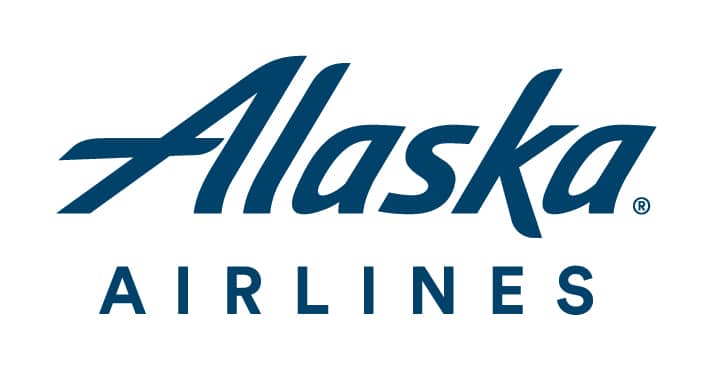

Totem Sponsors

Friend Sponsors


